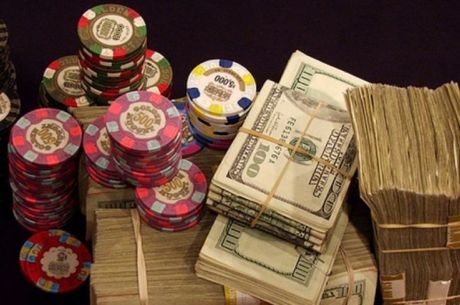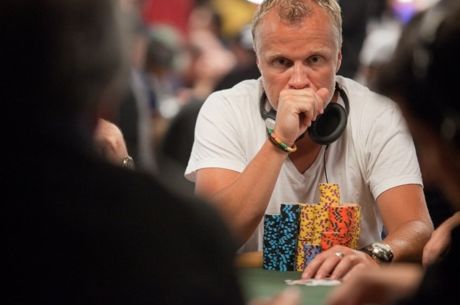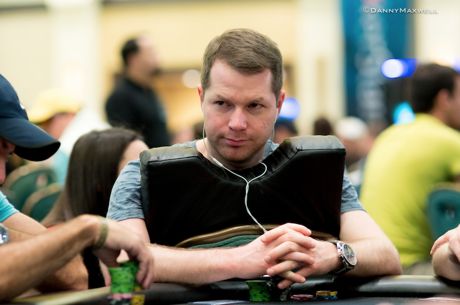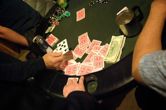Postflop Poker in No-Limit Hold'em: Don't Fear It, Focus On It
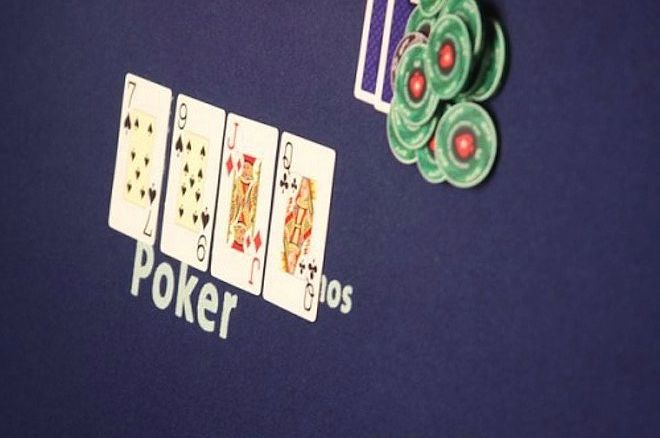
Today I want to share a quick lesson about no-limit hold'em I actually didn't come to appreciate fully until after having played a lot of pot-limit Omaha.
The advice is meant to encourage new NLHE players who wish to improve their games not to fear getting involved in postflop situations, but rather to recognize the need to focus on turn and river play in order to become better players.
PLO, the "Postflop Game"
When first starting out with PLO, I was like a lot of no-limit hold'em players dazzled by the possibilities of a four-card starting hand. I played too many hands, of course, as new PLO players often do. But it also took me a while to realize that preflop play had a much different significance in pot-limit Omaha than it did in no-limit hold'em.
Pot-limit betting often inhibits players' ability to build big pots or get all their chips in before the flop in PLO. The extra combinations of hands �� six two-card combos in PLO versus just one in NLHE �� also means a lot more possibilities around the table. Even with a great starting hand like K?Q?J?10? it is usually necessary to see a flop before getting overly excited about pushing your chips in the middle.
Once I began to appreciate these differences between pot-limit Omaha and no-limit hold'em, I understood what it meant when I'd heard players refer to PLO as a "postflop game." More specifically, I began to reorient my thinking to focus especially on the flop when trying to narrow opponents' ranges and measure my hand against theirs.
Preflop raises and calls (and limps, which happen a bit more in PLO), though obviously significant for building ideas about what an opponent might be holding, became relatively less important to the overall picture of the hand. The flop is where things "get specific," I realized, both with my judgment of my own hand's strength and my efforts to estimate what others were holding.
Preflop Play in No-Limit Hold'em
In no-limit hold'em, many players �� especially beginners �� focus a lot on preflop play. As they should.
Learning about starting hand selection is key early on, as is realizing you shouldn't be voluntarily playing 60-70 percent of your hands like you might want to, but a lot less �� more like 15 percent or so (in full-ring games). It's important also to learn early on that you shouldn't be open-limping, calling three-bets with mediocre hands, playing a lot from out of position, and so on.
Many new players will learn these preflop "fundamentals" relatively quickly, then it will take a lot longer to get an idea of how to handle more complicated situations that arise after the flop. That's because following general principles can often be just fine when it comes to preflop NLHE strategy, but the deeper you go into a hand, the situations "get specific," with general ideas often not being as adequate as strategic guides.
Yes, you can get it all in preflop in no-limit hold'em. It's always a possibility. And yes, premium starting hands in NLHE are relatively less vulnerable to being cracked than is the case in PLO. Pocket aces is always going to be a better than 4-to-1 favorite to win by the river versus any other hand, whereas a lot of times A?A?K?K? will only have around a 2-to-1 edge against many other playable PLO hands.
That said, you're still going to be playing after the flop a lot in no-limit hold'em. So you shouldn't neglect focusing on postflop strategy.
Hold'em Habits: Getting to the Turn
My mini-revelation in PLO helped me focus more on postflop play in that game �� or rather, I should say, not focus quite as much on preflop play as I tended to do in NLHE. It also helped me to realize that in many no-limit hold'em hands, it's actually postflop �� in fact, not until the turn �� where things "get specific." Let me explain.
Play or watch a lot of no-limit hold'em and certain patterns start to emerge. There's a collection of actions players tend to make with relatively high frequency �� the "expected" play, you might say. Especially among experienced, knowledgeable players, there are things most of them tend to do most of the time.
For instance, a lot of hands tend to involve just two players after the flop. One has raised (often from middle or late position), another has called (either from later position or the blinds), and it's heads-up to the flop. There are exceptions, with multi-way pots, three- and four-bet pots preflop, and so on. But a lot of the time hands are heads-up.
On the flop there are a couple more "expected" plays made more often than not, one by the preflop aggressor and one made by the aggressor's opponent who called the preflop raise. Let's imagine the example of a player raising from the button and another calling from the big blind.
First to act after the flop, the player in the big blind will often check. Certain players in this situation will check nearly 100 percent of the time. Most will check most of the time.
If checked to, many players on the button will continuation bet more often than check behind, "continuing" the initiative begun with the preflop raise. Again, certain players in this spot will almost always c-bet after an opponent checks.
Because these are the "expected" plays, they actually don't usually provide that much information when it comes to narrowing opponents' ranges of possible hands.
The size of the c-bet might suggest something. The texture of the flop can also make c-betting more meaningful �� e.g., the flop is very "wet" or coordinated yet the preflop raiser is still c-betting and indicating strength. But when the action goes check-bet on the flop, both players are still often just about where they were after the preflop betting and as the flop was being dealt.
If the big blind calls, that obviously indicates continued interest and depending on the flop perhaps helps the button bettor eliminate certain hands from the big blind's range. But information-wise, not a lot has been revealed quite yet.
This is all to say that for a significant percentage of NLHE hands that make it to the turn, the path taken to arrive there is going to be a fairly similar one, without too much to distinguish one hand from another. Now �� on the turn �� is when things "get specific."
Made hands are stronger, more apt to be bet or raised. Drawing hands are weaker, more apt to be checked or folded. This is where the narrowing of ranges based on player actions begins in earnest, especially in those hands that until the turn have followed this familiar, non-distinct pattern.
Not always, but in NLHE hands that follow this pattern (raise-call before the flop, check-bet-call on the flop), the turn becomes the place to direct your focus.
Conclusion
Much as I came to recognize the need to look more to the flop in PLO, in a lot of NLHE hands it's the turn where things frequently get interesting �� where the real, specific work of reading opponents' ranges often begins.
For new players looking to improve, rather than have anxiety about getting involved in hands that get as far as the turn or river, realize that sometimes that's where some hands really "start."

